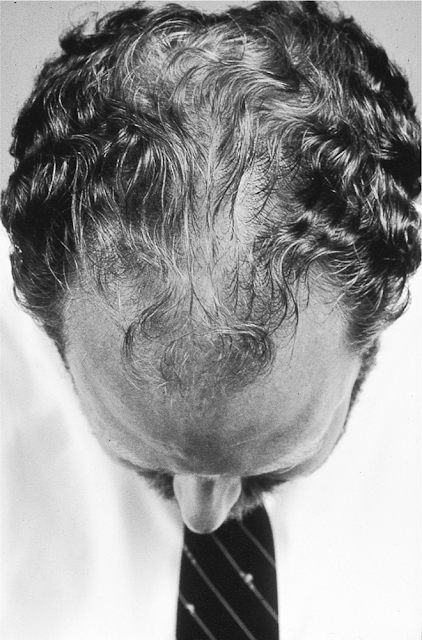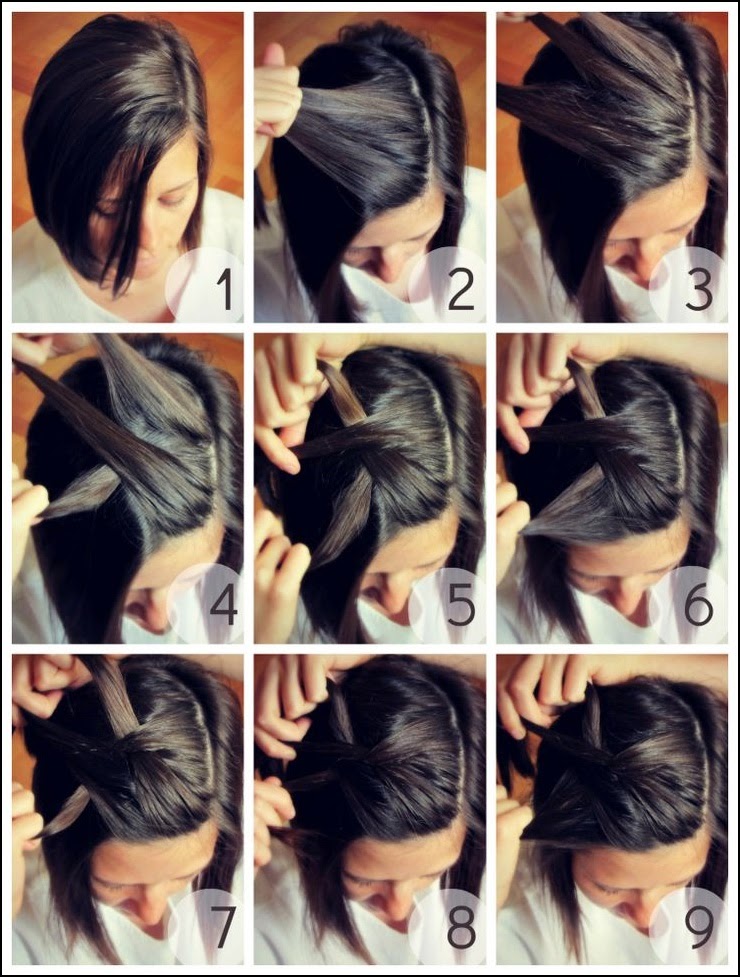Chapter 22:Hair Loss in Men
Chapter 22:Hair Loss in Men
It is an unfortunate fact of life that the majority of men will notice a decrease in the volume (thickness) of their hair as they age. In Caucasian males (the most prone to male pattern hair loss) a degree of hair loss probably occurs in 100 per cent. This can vary between a slightly receding hairline, a thinning crown, an overall reduction in apparent thickness, advanced receding from the forehead, very thin hair, and all the different stages through from being left with only a ‘horseshoe’ of hair going around the scalp from ear to ear, to baldness. The size of the horseshoe can also vary considerably, depending on genetic predisposition and the age at which thinning started.
Caucasians are the most effected. Black races less so, by probably about 50 per cent, and the extent of loss is also less. Asians are the least prone and don’t often go bald. An odd fact is that American Indians rarely, if ever, do either.
Male pattern hair loss has been mentioned historically as far back as 4000 years ago. At the time of the Roman Empire men wore their hair forward (like Julius Caesar) to hide their receding and thinning hair lines. And throughout history there have been countless baldness ‘cures’. The ancient Egyptians used snake oil extract, bird droppings and stinging nettles. Other bizarre remedies included blood from pregnant women and newborn babies, the menstrual flow of virgins, bat’s ears, rat entrails, bear’s grease, all sorts of plant mixtures and saps–and so it goes on. Although these days they are a little more sophisticated, so-called baldness cures don’t work either–at least the ones available over the counter don’t.
Male pattern hair loss
To start at the beginning, firstly, male pattern hair loss never starts before puberty. Perhaps in extreme cases where the genetic predisposition is strong, a small amount of hair thinning may occur pre-puberty.
There are a number of changes that take place coming up to, during and after puberty: the voice begins to change, becomes deeper and more resonant; sexual organs, testes and penis, enlarge and ejaculation becomes possible; the beard begins to become noticeable, the fluffier facial hairs get coarser leading to the necessity of shaving; hair begins to grow under the arms and the sexual parts, and hair can begin to grow on the chest and back. Every one of these changes is due to the increased production of androgens (male hormones), the most important of which is testosterone.
THE CONNECTION BETWEEN SCALP HAIR AND BODY HAIR
You may already be aware of it, but if not, look at the men on the beach or at a pool. The men with obviously thinning hair, and certainly those that are bald, have more hair on their body, particularly the chest and back, than the men with full heads of hair. An anomaly, you may think. It’s not. Body hair and beard hair are stimulated and become longer and stronger by the action of androgens. Scalp hair, on the other hand, is quite the reverse when the genetic predisposition is such that the scalp hair follicles are more sensitive to circulating androgens.
To reiterate then, male pattern hair loss depends upon two main factors: genetics and androgens (male hormones), which is why the medical name for it is androgenetic or androgenic alopecia–alopecia is hair loss and androgenic is androgens plus genetics. You can’t have male pattern baldness without androgens; for example, there has never been a recorded case of baldness in eunuchs castrated before puberty. The proportion of androgens produced, testosterone being the main one, although playing a part in the degree of loss, does not need to be excessive. In fact, normal amounts of androgens or even sub-normal amounts can cause hair loss in genetically predisposed men. The more sensitive the hair follicles are to the presence of androgens, the greater the effect of the androgens on them.
GENETIC PREDISPOSITION
It is commonly thought that the gene or genes responsible for hair loss are passed through the mother’s family. This is not necessarily true (see Chapter 27 on ‘Hair Myths’): it can be from either side. Sometimes there is no discernable loss in any of the family, but a quirk or some predisposition from way back shows itself. However, whatever the origin, to develop male pattern hair loss you must have hair follicles that are androgen sensitive. You may think it’s a case of chicken or egg–it’s not really. Firstly comes the predisposition or ‘sensitivity’: without it, androgens won’t effect the follicles.
WHAT HAPPENS
Androgens restrict the growth cycle of hair. By not allowing the hair to reach its optimum growth, which is approximately three and a half years and 21 inches long, it stops at, say, three years, then two and a half years, two years and so on. A shorter growth phase results in the hair being shed sooner–hair doesn’t remain in the scalp unless it is growing. You may not always notice extra fall (although the chances are that you will), but a secondary change also occurs, i.e. the hair strands become finer, thinner in diameter. Two further things then occur. Firstly, thinner textured hairs resulting from hairs that were thicker also don’t grow as long. Additionally, they take up less space, so there is more area between the hairs. Compare 100 thumbs (as hairs) and 100 fingers on the same site. The ‘thumbs’ would have appeared to be thicker, which they were, and stronger, which they also were, compared to the fingers that are there now, giving less volume overall. The ‘fingers’ are eventually replaced by little fingers (‘pinkies’), lasting less time. And so it goes on until only fluffy hairs grow, or non-meaningful hairs as I call them–they don’t mean anything to the look of your hair because you can’t see them.
Research has shown that when a hair reaches a diameter of 40 microns, it rarely grows longer than 80mm (3 1/2 inches). This appears to be a crucial stage, when often the hair loss can appear to accelerate noticeably. However, sometimes the deterioration seems to stop and the quantity remains similar for a long time.
There are numerous instances when the rate of hair fall doesn’t noticeably change yet the hair is obviously getting thinner and receding. This is a slower progression and isn’t noticed until it reaches an obvious stage, whereby the man thinks it has happened very fast and can’t understand why he hadn’t noticed more hair fall (see Chapter 2 on ‘The Rules of Hair Growth’).
Everyone loses hairs daily, even if you don’t see them fall out, particularly if the hair is short. It’s the replacement hairs that have become gradually finer; then suddenly there is an awareness to the loss of volume or the recession, again the thought being that it has happened quickly. The rate of shedding and change in diameters also fluctuate. Often for no discernable reason your hair seems to go into remission and remain the same for months or longer–or even appear to improve. However, the changes over a year or two are usually remorseless.
WHAT YOU CAN DO
There is no doubt that dietary factors enter into the equation, and a look at these by reading Chapter 17 on ‘Hair Nutrition’ will certainly help. But reading the chapter is obviously not enough: you have to do what it suggests! Particularly with adequate protein intake.
Keeping the scalp clean and exercised with daily washing and gentle kneading and massage–and not abusing your hair with hard brushing to pull it out–are also factors.
However, the primary consideration is to control the effect of the androgens on the ‘target site’: your hair follicles. There are two ways of doing this, either internally or externally.









Comments
Post a Comment
HairFashionOnline Comment Policy
We welcome relevant and respectful comments. Comments with Promotional hidden links may be removed.
Please read our Comment Policy before commenting.